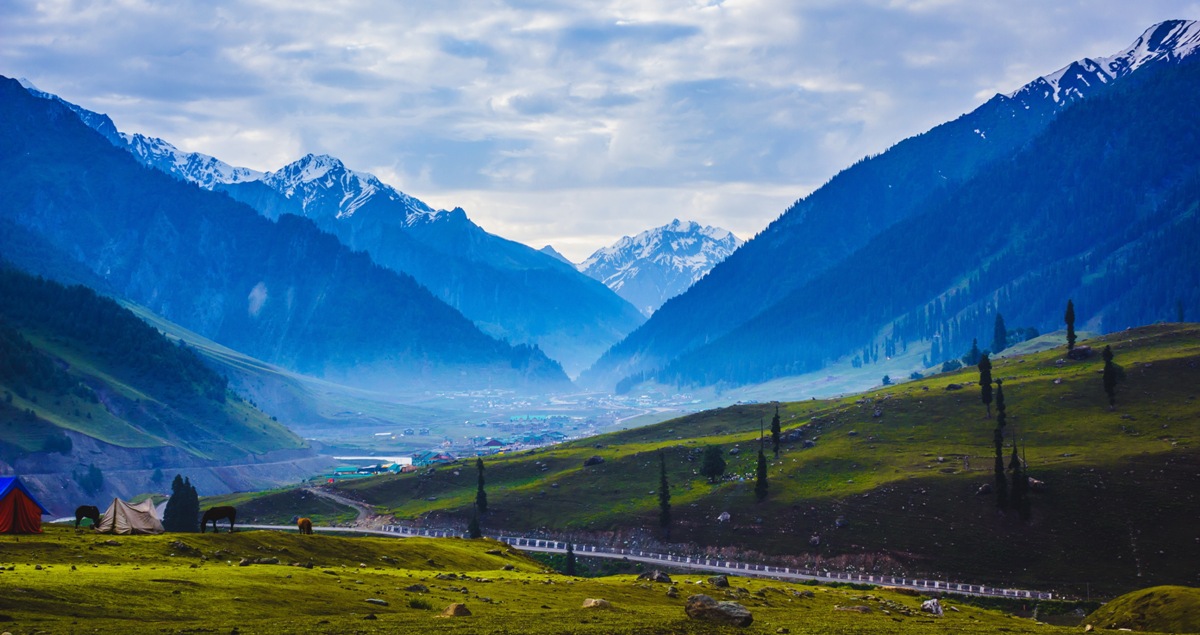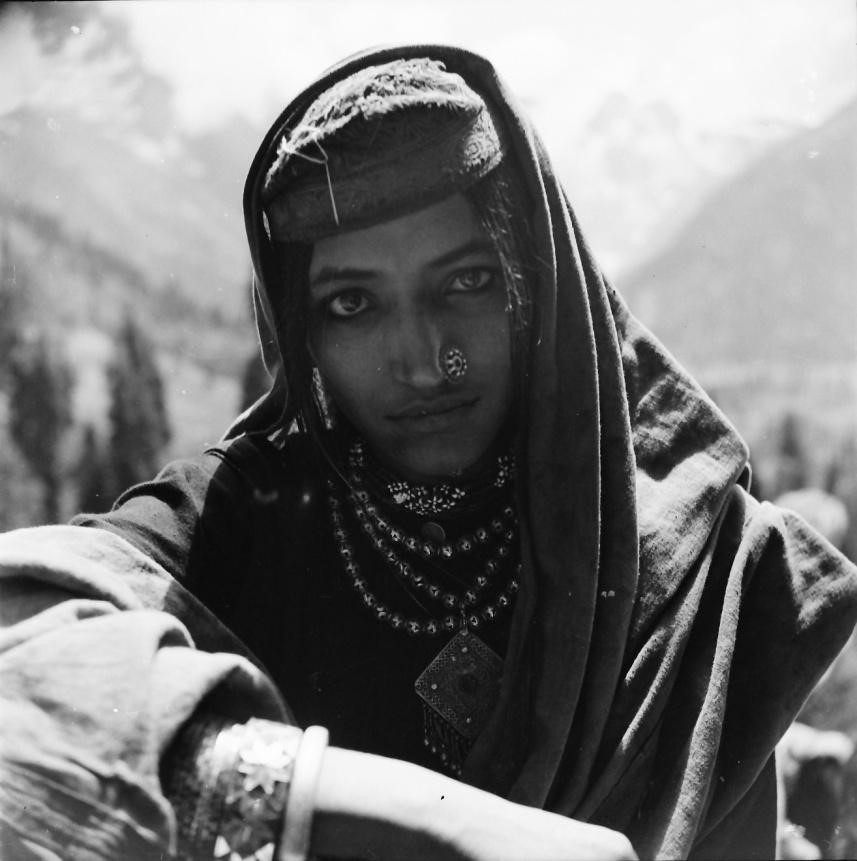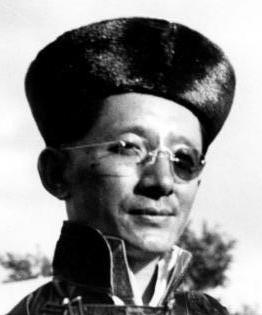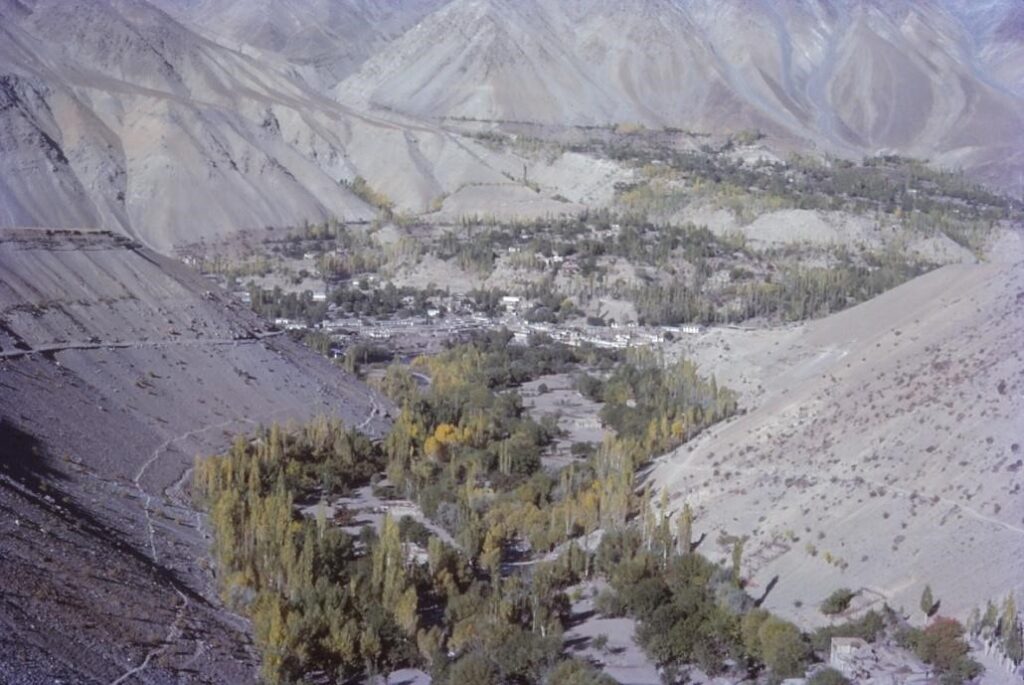Late Sati Sahni recounts the stories of three brave soldiers sans uniform from the far-flunge border areas of the erstwhile Jammu & Kashmir
Here are three unlikely heroes of Kashmir. The well-known adage goes that “not all heroes wear a uniform” is apt for these three people whose stories of valour and how they acted as saviours must be told and popularised. All three belong to far-flung border areas of Jammu and Kashmir (bordering Pakistan). The boundaries of the erstwhile state of Jammu & Kashmir (which included Ladakh too) can be divided into three distinct geographical areas – Jammu, the valley of Kashmir and Ladakh. Wars were fought with Pakistan for these strategic areas in 1947-48, 1965, 1971 and 1999. Our heroes hailed from these areas and played pivotal roles in 1947, 1971 and 1999. Here are their stories which are not so well-known even though two out of the three were honoured by the government.
Maqbool Sherwani – Baramulla, 1947
The “Tribal” raid in Baramulla by the “kabailis” sponsored by the state of Pakistan started on October 26, 1947. 20,000 unruly tribals (lashkars) entered the peaceful town of Baramulla on the Srinagar –Muzaffarabad road. What followed was a massacre. It is estimated that out of a population of 14,000-15,000 of the town only 3,000 or so survived. They plundered, looted, raped and simply ravaged the town. This fact is written in a book “Raiders in Kashmir” by the main Pakistani commander Brig. Akbar Khan overseeing the entire operation.
The Muslim League’s high command had tasked Mian Iftikhar ud Din, Minister for Refugees. to prepare a plan aimed at ensuring that the Muslim majority state of Kashmir should join Pakistan. Brigadier Akbar Khan then serving in the Pakistani GHQ wrote an appreciation ‘armed revolt inside Kashmir ‘ on Mian Iftikhar ud Din’s request. It appears that Mr Jinnah had tasked Liaquat to handle the Kashmir business. Liaquat in turn earmarked Mian Iftikhar ud Din. Iftikhar requested Sardar Shaukat Hayat and Brigadier Akbar Khan for advice. A conference presided by Liaquat was held at Lahore in September 1947. This was attended by Akbar whose appreciation had already been shown to Liaquat by Iftikhar ud Din earlier. Ghulam Mohammad the Finance Minister who was a contemporary of Liaquat at College and at this time was foremost in playing sycophant par excellence with Liaquat also attended the conference. Brigadier Akbar recalls that everyone was enthusiastic but no one including the Prime Minister had any concrete idea about the tangible and concrete aspects of the actual plan of operations, specially as far as the logistic and armament aspect was concerned. Shaukat was appointed as overall incharge with Major Khurshid Anwar (Retired) commanding the northern tribal force which was as per Akbar’s appreciation to attack on Muzaffarabad-Srinagar axis. 
The tribesmen were brought from the NWFP tribal areas on trucks requisitioned by the Government of Pakistan and concentrated in Batrasi, north-east of Abbottabad. The invasion was to commence from October 20, 1947; the main northern tribal force invading Kashmir under Khurshid Anwar on Abbottabad-Garhi Habibullah-Muzaffarabad-Srinagar axis with a smaller auxiliary force advancing along Murree-Kohala-Muzaffarabad axis.
The distance between Srinagar and Muzaffarabad was less than 100 miles. The
only rail link of the state was the one connecting the town of Jammu with Sialkot in Pakistan. The only way Indians could reinforce the State and save its capital Srinagar was by airlifting troops to Srinagar. If Srinagar was captured the whole Kashmir vale and the entire northern areas including Ladakh could no longer be held by the Indians. There were no subtleties or complexities of operational strategy in the whole situation except following one simple straightforward plan ie; a bold and swift advance to Srinagar assisted by a troop or squadron of armoured cars.
The main attack plan was called “Operation Gulmarg” and was actually handled and signed by the head of the Pakistan Army. Each of the detachment of these tribals was commanded by a Pakistani army regular without uniform. The attacks started on the night of October 21–22 with Muzzafarabad being the epicentre. The state forces unfortunately aligned themselves with the Kabali raiders and so this important city was overrun. Soon Domeil, which was strategically important, was taken. There really was no resistance in between Domel and Uri. It was here that Brig Rajinder Singh, Chief of the state forces, laid defenses to halt the massive invasion. Unfortunately, his motley forces could not hold the position as they were totally outnumbered. After retreating a number of times, the state forces were totally destroyed and the gallant Brig Rajinder Singh too fell on the outskirts of Baramulla.
Maqbool Sherwani, a 19-year-old Kashmiri lad, was enraged that his peaceful, multicultural city was being destroyed by these animals. Baramulla, based on the banks of the Jehlum river, was primarily a trading town with Kashmiri Pandits, Muslims and Sikhs besides a well-known convent with a fairly large population of priests and nuns. Old-timers say that Maqbool was seen mobilising the locals by going around the town on his motorcycle. He saw the raiders plundering the city and that spurred him to hold rallies rousing the people to unite to take on these Kabailis. Apparently, the residents were so scared and scarred seeing all this looting, plundering and killing that they hid, but saw this young brave boy braving all this and not worried for his life. Seeing a local citizen on streets, the so-called Kabailis raiders asked him for the way to the airport. It seems that they were told that the first job they had after capturing the Baramulla town (you could say it was the entry to the valley of Kashmir) was to capture Srinagar Airport as it was the only means for urgent deployment of the state security forces / Indian army in case the Maharaja asked for assistance. Capturing the Srinagar airport was vital as it would mean that there was no other means of entering the valley thus cutting it off from the rest of India.
Maqbool sized up the situation very swiftly and decided that the only way to delay and gain time was to lead them into nowhere. This is exactly what he did by pointing the raiders into the wrong direction totally. By this time, the Maharaja had learnt that the raiders who had earlier over-run Domel and Uri were sponsored by the state of Pakistan, and had asked the Indian government for assistance. Subsequently, the instrument of Accession was signed which paved the way for the Indian troops to land in Srinagar. The crucial few hours in which Maqbool led the Kabailis astray were enough for the defense of Kashmir.
The raiders, after wandering on the wrong path for some time, realized that they had been led astray, turned back and wanted revenge. Maqbool had by that time managed to go to a small place some distance away, but was tracked down, bound and dragged to Baramulla town. This was to set an example for the other Kashmiris patriots. He was tied to a pillar, shot dead and later when the Indian Army entered Baramulla his mutilated body was found with 14 bullets. There was a note denouncing him as a traitor whose punishment was death.
The importance of Maqbool Sherwani’s actions can be judged from the fact that that when Indian army reached Srinagar, the raiders had just about reached the outskirts of Srinagar — just a few milestones away from Baramulla. Those crucial hours made all the difference as it could have cost the entire Srinagar city.
Maqbool Sherwani became an instant hero – a martyr. The news of his heroics spread like wildfire uniting the Kashmiris against the Kabailis and started a popular uprising. He became a catalyst and the local resistance ultimately helped the Indian Army to drive these raiders back across the Jehlum at Uri. They received the Indian army very warmly at the airport and gave all possible assistance. A memorial still stands on the outskirts of Baramulla town to this brave young lad.
The battle of Shaltaing was planned to hold the enemy away from Srinagar and if possible push them back totally. The battle took place on November 7, 1947 when over 600 Pakistani raiders were killed. Thus began the pushback to Baramulla for liberation on 9 November. Uri was liberated on 11 November from the raiders by the Indian army.
Pakistan never could accept this young man’s bravery and siding with the Kashmiris and subsequently the Indian state, that when they sponsored militancy in the late 80’s, this monument was desecrated in the initial months itself. The importance of his sacrifice was also highlighted by Mahatma Gandhi himself. The survivors of the horrific events related some gruesome tales of killings, looting and barbaric destruction. A few years later the whole scene was reconstructed in an audio-feature by the well-known AIR producer and my very good friend, Melville DeMello titled “Rape of Baramulla” and was reportedly played at the United Nations during a debate on Kashmir in 1957. That radio feature brought tears to the eyes of Jawaharlal Nehru as well as many others who heard about the depravity of the marauders. Since it had actual voice recordings of foreigners including Father George Shanks, sisters and nuns of St Joseph Hospital and a few important locals players of the Pakistani depredations, it made a forceful impact and strengthened the Indian case at the UN.
———————————————-
Baramulla, 34 Miles from Srinagar on the Sringar – Rawalpindi road was a thriving, commercial township of nearly 14,000 inhabitants. All fruits produced in the Baramulla & Sopore belt used to be brought to the town’s fruit mandi for further transportation & distribution. One of the major halts on the Jhelum valley road was this small yet picturesque town which was also the last town before leaving the Kashmir valley.
All my life as a student in Kashmir, I used to go for winter vacations to Rawalpindi and Lahore. I have traveled along this road in many different forms of transport including an Ekka (two-seater) , a tonga (four-seater) both of these forms of transport used to take about four days and with horse changes at different stages and used to cost me about Rs. 10 for an Ekka. My last ride using a Tonga on this road was around 1927. It was a little later that a small passenger bus (Cheverlot make 14 seater) was introduced on this road & used to take 14–16 hours each side. The Jehlum Valley road was mostly on the left bank of the river from Kohala (the then border between British India and Jammu & Kashmir state) and the major towns on the route were Baramulla, Uri, Garhi, Domail, Kohala, Murree and then Rawalpindi. When cars were introduced around 1929, the journey time reduced to 12 hours and I remember paying only 3 rupees from Rawalpindi to Srinagar. Uri was a major commercial centre for walnuts, corn,ghee, and some other dry fruits. Domel was the customs barrier between the two states and all imports & exports subject to customs duty as scheduled from time to time. I vividly remember the beautiful Dak (Tourist) Bungalow on the river bank where the Khansamah produced delicious meals.
March 1946 was the last time I traveled on this road from Srinagar to Rawalpindi and and further onwards to Sialkot and Jammu. This was as the Srinagar / Banihal / Jammu road (known as the Banihal cart road) was closed due to snowfall. On October 22, 1947, the traffic on Jehlum Valley road came to an end after the Pakistani invasion on Muzzafarabad and no civilian transport plied thereafter.
————————————————–
Shrimati Mali – Poonch,1971
Poonch is a small province in Jammu region of the state and from an international standpoint a very strategic area as it is the foothills of the Pir Panjal range bordering Pakistan. From 1947–48 onwards, the Pakistani Army had been desperately seeking to capture the area so as to choke the Kashmir valley from the western flank. Just like the two earlier wars, in 1971 too they were very keen to capture this area specially as the Indians controlled the strategic Hajipir Pass. This time around, they wanted to try other tactics and for that they planned a very secretive special forces operation to attack from the rear as well as a frontal assault.
The Pakistan Army pushed and infiltrated a crack force into hiding deep into the Indian territory with the orders to hide in the deep jungles. Apparently, the advance force arrived on December 13, 1971 and hid themselves in Arai top and Pillanwali. In winters this area is covered in snow and it is very rare that locals including the Gujjars and Bakerwals venture out in this area. Unfortunately for them a local village lady ,Mali (a Bakerwal) had run out of fodder and could get that together through that Pillanwali area. While approaching the area, she noticed smoke coming out from two seemingly abandoned huts. Out of curiosity as to who could be out there at this time of the year, she went towards the huts when she heard voices of men speaking in a different language. With her hackles up, she approached them very quietly and cautiously so as to be undetected by anyone who might be on the look-out. Peering through the crack of a hut, she saw men with weapons who seemed to be just getting ready for action by cleaning their guns and discussing the terrain around. Although scared for her life, Mali had the presence of mind to quietly withdraw and from a safe distance quickly ran back to her house to inform her men folk in the family. Her brother warned her not to talk about this with anyone as they could be in harm’s way by these intruders.
Not convinced about the explanation by her family she then went to the village sarpanch hoping that he would take her seriously and report the matter to the authorities and the army post located not too far away. Incredulously, the sarpanch too thought it was far-fetched thinking of a sick lady. Later the sarpanch was questioned and who said that knowing that it was war time, did not want to rake up seemingly questionable information and divert resources of the security forces. Fortunately for India, this brave lady driven by patriotism, undaunted in being branded a trouble-maker, approached the nearest detachment of ITBP not far away even though the route was treacherous being covered in thick and fresh snow. Mali could speak only the local language but could convey that some very suspicious people were in the mountains just above her dwelling. Fortunately, the unit incharge decided that this needed to be immediately reported and approached the nearest army post not too far away. The unit was from a Sikh Battalion and fortunately the commander understood the gravity of the situation. He immediately mobilised the unit with the lady herself leading the detachment through deep snow, extreme cold conditions and darkness to the hideout of the intruders. In the firefight which took place about 25 Pakistani army soldiers were captured, interrogated and the entire plot unraveled. It seems that a full battalion-size force of the enemy was soon going to attack through the thick jungles and narrow gorges hoping to have the element of surprise on their side. The Indians immediately mobilized the entire battalion and launched a counter-attack so that they now had the element of surprise. The threat was neutralised before the Pakistanis could do anything. Thus the entire of Poonch sector as well as the main garrison was saved.
The army immediately acknowledged the brave and gallant act of the simple village lady, Mali and decided that having saved the prestige of the Indian army and the country per se, she should be recognized and awarded. This was duly recognized by the government and in 1972 Shrimati Mali was awarded the Padam Shri by the President of India V V Giri. She got a citation and the customary Rs. 10,000 which accompanies this prestigious award. In getting this award she was the first person from this small and nomadic community of the Pir Panjal hills. A salute to this brave and patriotic lady.
——————————————————-
Tashi Namgyal – Kargil / Dras sector, 1999
Everyone witnessed the bonhomie of the events with Pakistan which led to the culmination of the bus diplomacy by Prime Minster Atal Bihari Vajpayee. The euphoric event was the perfect smokescreen to the actual events planned by the Pakistani establishment. The devious Pervez Musharaf had planned meticulously a big stab in the back but did not contend with Indian resilience and patriotism. Time and again the patriotism of the residents of all three areas of state of Jammu & Kashmir were questioned and this is what Musharaf banked upon. Yet the Pakistani establishment did not contend that one person could totally unravel their well laid-out plans. This is what happened in two previous wars and this time around it was the simple shepherd of Batalik (a remote border village of the Kargil region) of Ladakh.
To understand the ground situation better and appreciate the rugged terrain of the barren, rugged and bitterly cold mountains, one has to visit the area to get an idea how vulnerable the Srinagar–Kargil road is. This was earlier the only lifeline to the massive inhospitable land mass of Kargil, Ladakh and Nubra. While there was another very basic road from Himachal (Manali, Lahoul areas) to Leh, located close to the Aksai Chin plateau, it was this road (Srinagar–Kargil–Leh spanning 434 kms) which was the lifeline for all civilian and military traffic. Pakistan could never get over the fact that India had occupied the heights of the Siachen glacier and has remained in control since then. Prior to 1984, neither India nor Pakistan had any permanent presence in the area of Siachen. Most of the Siachen Glacier as is the LoC, a disputed territory between India and Pakistan. Located in one of the most strategic areas of the Karakoram range, it was very important for India to gain control of this area to monitor the activities of the Pakistan and China. Pakistan has illegally occupied large swaths of Kashmir and in fact has further ceded a large area to China. The Siachen glacier overlooks that area and so it very important from a military standpoint. The occupation of heights of Kargil and Dras was planned so as to take control of the road leading to Siachen and thus choke India.
The road below is clearly visible from these heights and hence traffic can easily be disrupted. Basically they wanted to take control of Siachen by enforcing a blockade of this road.
Tashi Namgyal – a local Yak herder, was minding his herd on the morning of May 3 in the barren mountain slope high up in the lower Suru valley. The locals in that area have very little means of lively hood and are mostly army contractors carrying supplies from the base to the various picquet’s dotting these high mountains all along the border. They knew the entire area very well. This is the area between Kargil and Dras which is very close to the LoC. It was here when Tashi lost track of one Yak and while scanning the area with his binoculars to find it, was dismayed to see some men in alien tribal attire (wearing a Shalwar Kameez) walking high up on the slopes. He sensed that these people were from across the border as the locals never dressed like this and the only other people that far up on the hills were the Indian army who would never be in anything but their khakis. Tashi followed these people from a safe distance and when he came closer found that they had weapons too. Being very suspicious, he decided that this needed to be reported back to the army authorities and ran back to the nearest post.
His report was found to be accurate and the result was that Operation Vijay of the Indian army was launched resulting in flushing out the Pakistanis. It was proved that the Pakistani Army was masquerading as the tribals – a strategy they had used in 1947 and then again in 1965 and yet again in 1971. It was not the first time and I am sure it will not be the last time.
Unfortunately, Tashi never did get any recognition in terms of any awards or rewards from the Indian Government. The Army though did recognise his efforts and helped him and his family in any way that it could. Fortunately, the real heroes don’t care about rewards and awards. JAI HIND !











